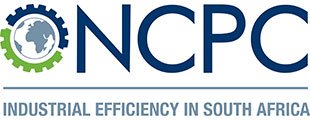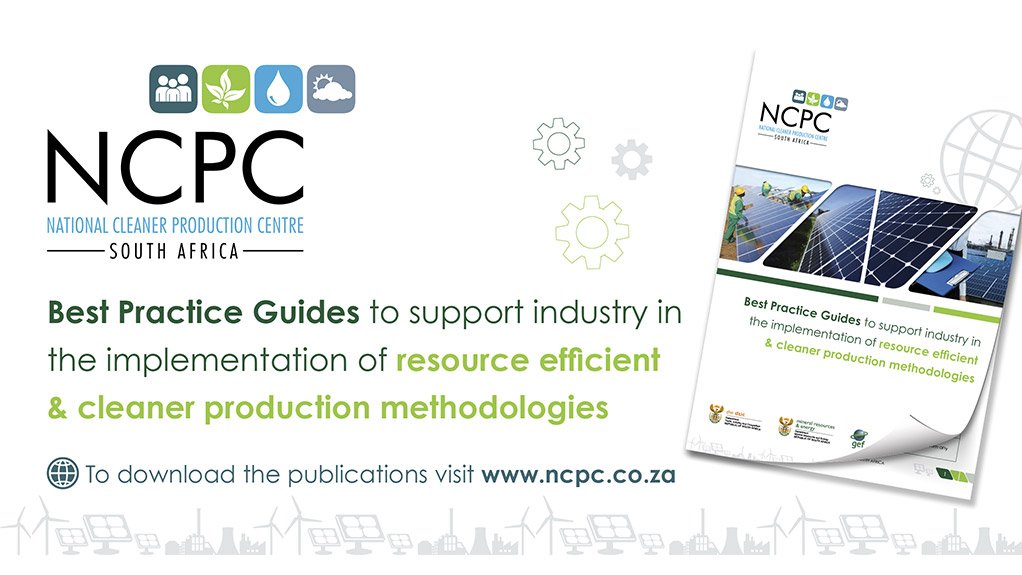The most difficult part about starting the Resource Efficient and Cleaner Production (RECP) journey is taking that first step. The National Cleaner Production Centre South Africa (NCPC-SA) has made the journey to achieving significant resource savings with little investment and maintaining them by creating the Industrial Efficiency tools.
These tools promote the continuous application of RECP – the implementation of preventative environmental strategies to processes, products and services to increase efficiency and reduce risks to communities and the environment.
The tools vary from case studies, guides and reports to videos, which were created in line with the Centre’s mandate to promote the implementation of RECP methodologies to assist industry to lower costs through the reduced use of energy, water and materials, and waste management. To view more guides visit: www.ncpc.co.za.
This particular feature focuses on the Compressed Air System Best Practice Guide developed by NCPC-SA Quality Manager Tanya Van Zyl. It is important to focus on compressed air because it is the most commonly used process utility but it is also the most overlooked energy consumer. There are many applications from controlling the process, to driving hand tools in industry. There are also many misapplications of compressed air such as personal cooling, sweeping and mixing of liquids.
Below is a list of opportunities where companies can reduce energy costs, CO2 emissions and facilities’ environmental footprints by ensuring the optimum use of compressed air systems.
Systems Approach
• Accurately obtain the demand for compressed air by considering the pressure and volume for the entire system. Match the supply of compressor and accumulator to the demand, while taking into account not only the maximum demand, but also intermittency.
• Consider implementing an energy management system (EnMS) such as that used for ISO 50001. The CUSUM calculation would be particularly beneficial to readily see when performance falls off.
Condition of Pipes, Fittings, Joints, Filters and Moisture Eliminators
• Walk through each branch of the distribution system, including the air consuming applications and devices.
• Note where there are leaks (refer to the section below on leaks) and draw up a schedule for regular checks.
• Eliminate or isolate unused sections of the pipes.
Air Pressure
• Use the pressure appropriate to the equipment in the system. The need for higher pressure than specified for the tool or equipment could suggest another problem. Often, these could be lines that are too small and/or have insufficient air volume.
Pipe Sizing
• Pipe sizing relates to pressure and volume required at the point of use (refer to the previous point).
• Undersized pipes can lead to higher pressure requirements and higher leakage losses.
• Oversized pipes can lead to lower friction loss and increased capital cost.
• The life cycle costing is likely to be lower for a system with larger diameter pipes as the running costs could dominate the lifespan of the system.
Compressor(s)
• Ensure that the compressor air intake is in the coolest possible place. This would often be outside the compressor house, i.e. in a shaded area.
• Generate air at the lowest possible pressure to supply the demand.
• Ensure that the compressor runs in the most economical way. Idling compressors (when there is no demand for air) still consume a lot of energy without any productive output.
• Switch these off when they are not in use.
• Multiple compressors serving one header should be staged such that successive compressors are only brought into operation when the preceding one has reached full capacity.
• Preferably, the final compressor in a sequence should be one that has a variable speed drive for it to follow the demand closely. Compressed air system’s Best Practice Guide are found in most industrial plants. Although compressed air is the most commonly used process utility, it is the most overlooked energy consumer. They have many applications from controlling the process, to driving hand tools. There are also many misapplications such as personal cooling, sweeping and mixing of liquids.
Heat Recovery
• Much of the energy that is supplied to an air compressor is released as heat. This is usually vented away but there are two alternatives for capturing this heat. Recently, model air compressors have the facility to install recovery devices in the cooling air stream such that the waste heat is converted to hot water for use elsewhere. Another option is to position an air-water heat pump in the hot outlet airstream.
Water Drainage
• The accumulation of water and scale in the system can lead to pressure drops.
• Slope pipes to drain points which are fitted with drain traps that will open to expel water when full.
Leaks
• Air leaks are a direct energy and financial loss.
• Most leaks can be detected easily when walking the pipe run. Leaks in difficult to access places can be detected by using a special leak detector.
• During maintenance, leaks are usually simple to repair.
Air Receivers
There can be a part of the system which has short-term spikes in demand. This does not mean that larger compressors are necessarily required, or even that a dedicated one is needed. It may be possible to satisfy this intermittent demand by fitting an appropriately-sized air receiver near the demand. The receiver empties to satisfy the short-term demand and then gradually fills while the compressor operates normally.
Air receivers generally allow for greater stable operation of systems as they act as dampers to reduce short-cycling.
Air Treatment
• The act of compressing air condenses the water vapour in the air. This moisture-laden air can be supplied to the loads which could be unable to cope.
• Compressor lubricating oil mist can also enter the distribution system leading to no positive result.
• The air could also contain dirt and microbes.
• These contaminants can be removed by various kinds of filters, dryers or refrigerated coolers.
• Do not over treat the air beyond the requirement of the end use.
Maintenance
• A regular maintenance plan will capture the deficiencies mentioned above.
• Leak repair and filter cleaning is particularly important.






